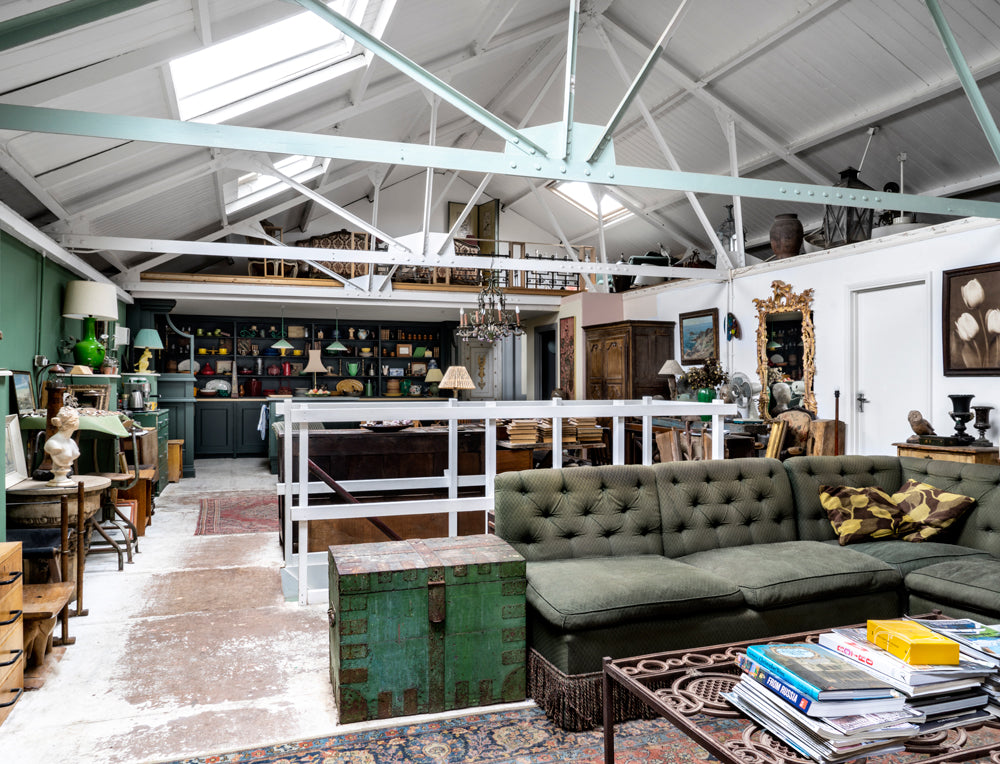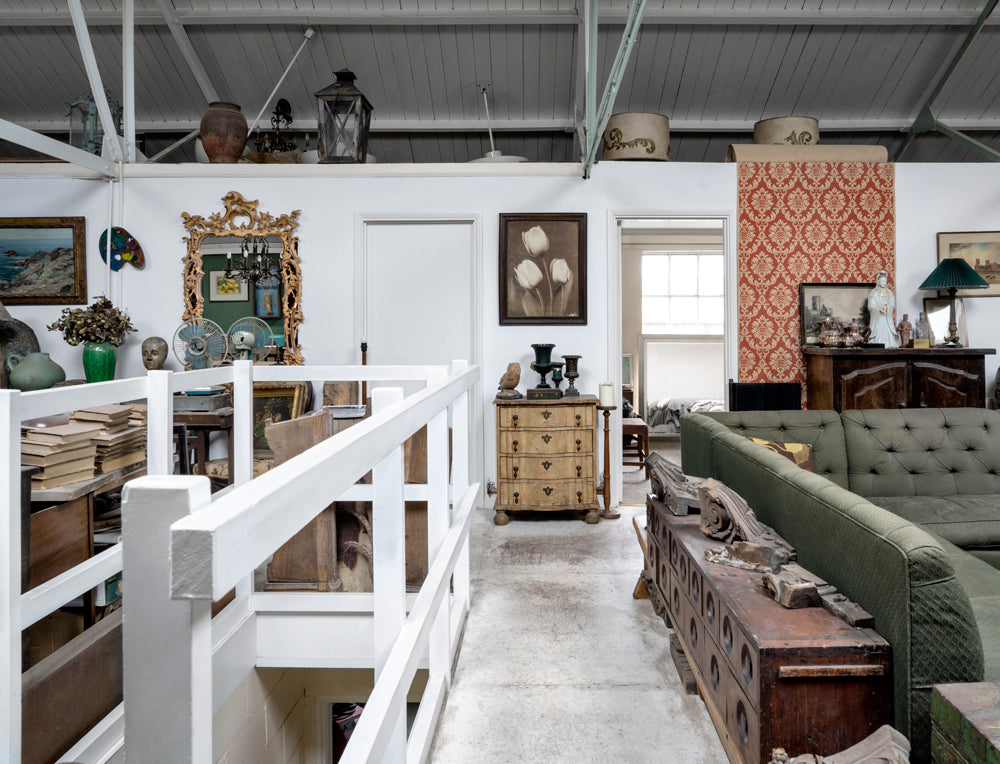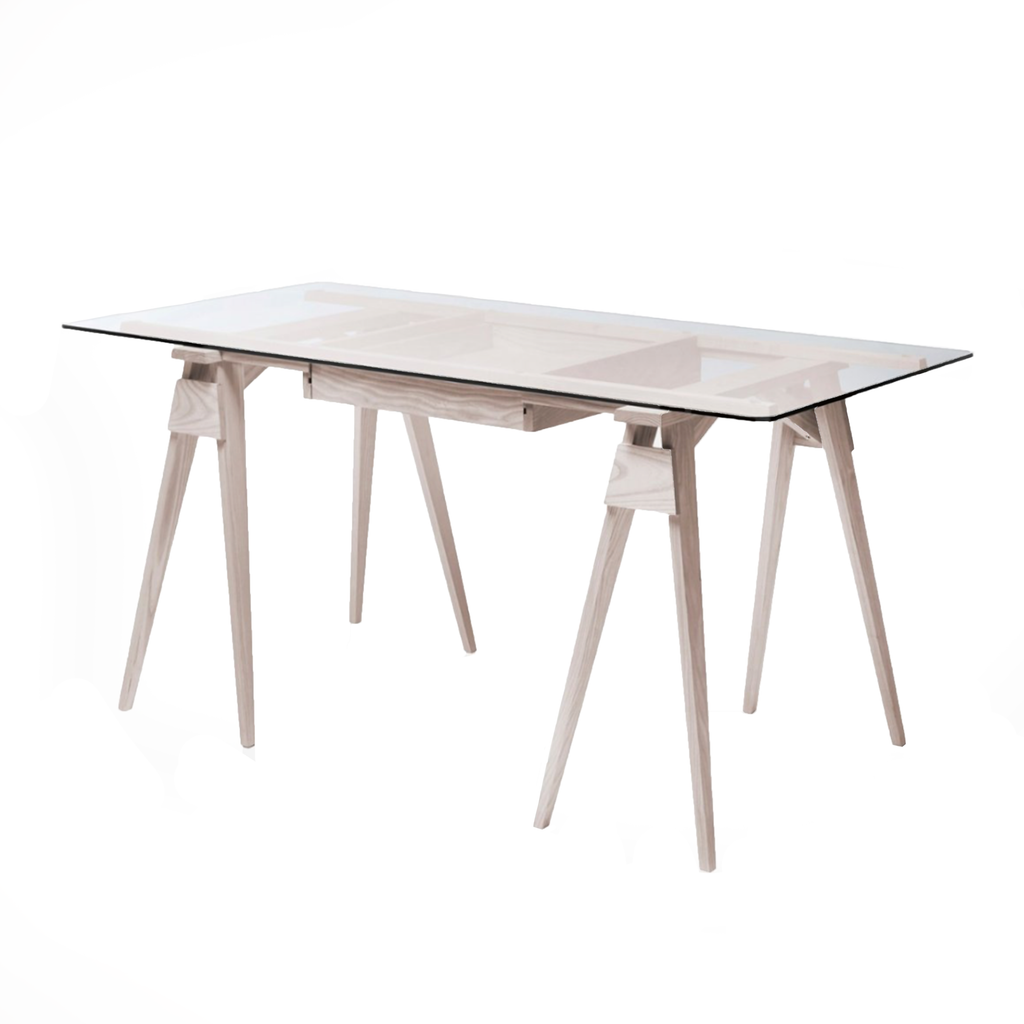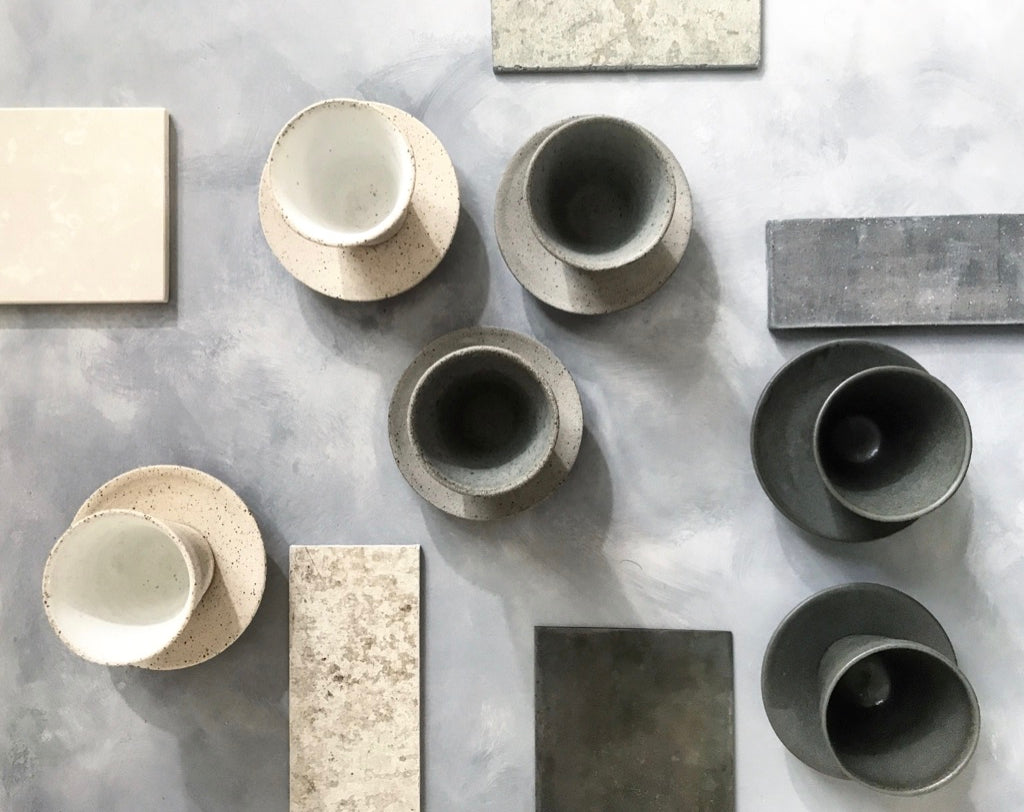
Handmade or hand-selected, we're proud to support exquisite craftsmanship and specialist skills. Join us as we sit down with artisans, curators and designers in our Meet The Designer series.

The art of pottery has seen a revitalisation in recent years. Today, artisans around the world are demonstrating that the ancient craft has as much appeal as ever. Jono Smart is one such artisan. Working with Emily Stephen, their studio produces beautiful ceramics. We spoke with Jono to learn more about the process behind his craft and what exciting developments he and Emily are working on.
Jono could you please introduce yourself to our readers? What is your background, where are you based, and what do you specialise in?
My name is Jono Smart, I’m a studio potter based in Glasgow, Scotland. I mainly focus on functional ware but am beginning to explore sculptural ceramics. Before becoming a potter I worked in garden design in London.
You and Emily Stephen work together. Can you tell us about the various projects you've worked on in the past and what exciting developments you are currently working on?
Well. Not only do we work together but we also live, eat and travel together. Everything you see coming out of the studio is the result of our collaboration. We are constantly talking about and designing new work.
Recently we have expanded the studio’s capability to include woodturning to go alongside the ceramics. There is a natural harmony between clay and wood. The softness of timber and the hardness of clay. Emily will be focused on the woodwork side of things, while I’ll remain a potter. We are working towards joint exhibitions in the future.
Can you tell us about the range of pottery you create? Which are your best-selling items?
In a word: cups. Cups make up about a third of our sales. Which is fortunate because I love to make them. The amount of clay required is a really lovely amount to throw on the wheel. The physical exertion is just about right to allow me to get into a rhythm of making. Some weeks all I want to do is make cups of various shapes and sizes.
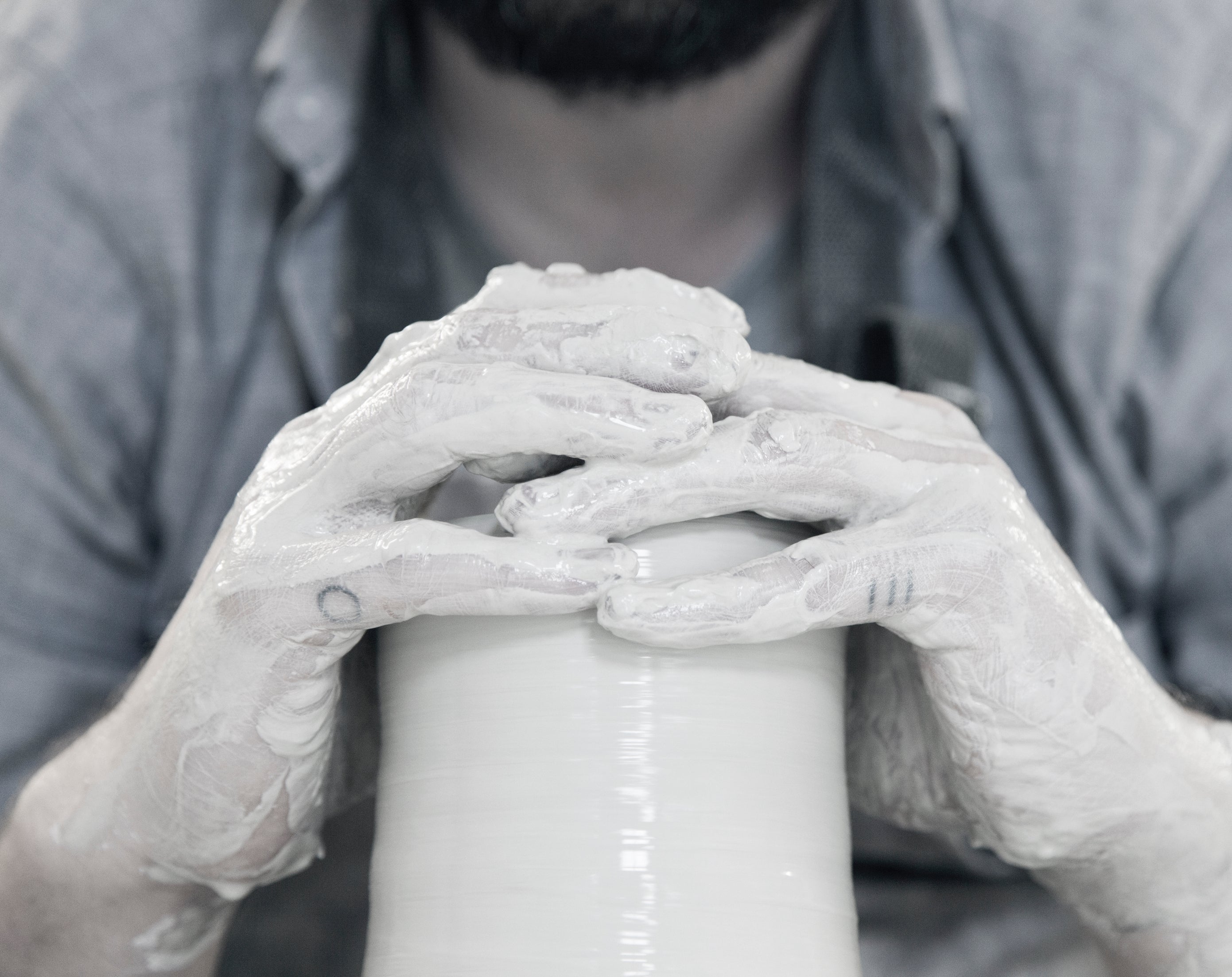
“I mainly focus on functional ware but am beginning to explore sculptural ceramics.”
What does the process of creating a piece look like from start to finish?
The process starts with wedging clay. This is done to loosen the clay up, remove any air pockets and even out the water content. The clay is then weighed, balled and thrown into forms on the pottery wheel. After letting the pots dry to ‘leather hard’ overnight, they are put back on the wheel and trimmed to their final precise forms. They’re then left again to fully dry, fired once in the kiln, taken out, glazed and refired.
What has informed your designs? Where do you find inspiration?
I was fortunate enough to work for an incredible garden designer: Luciano Giubbilei. The gardens he made often included works from artists and sculptors. Getting to visit their studios, see how they work and create has been a huge inspiration towards how I work. Closer to pottery, I love the work of modern Japanese potters. They manage to combine precise, finely thrown forms alongside heavily textured surfaces. Something I am always trying to achieve.
What does a typical working day look like for you?
We work all the time. Often seven days a week. A pottery studio has its own rhythm. It’s difficult to leave pots once they are thrown as they start to dry. I have a limited amount of time to get them finished. So when the studio is in production mode we work all the hours our bodies allow us. But then once the firings starts the studio slows down to half days of loading and unloading kilns, photographing and preparing the website for the next shop update.
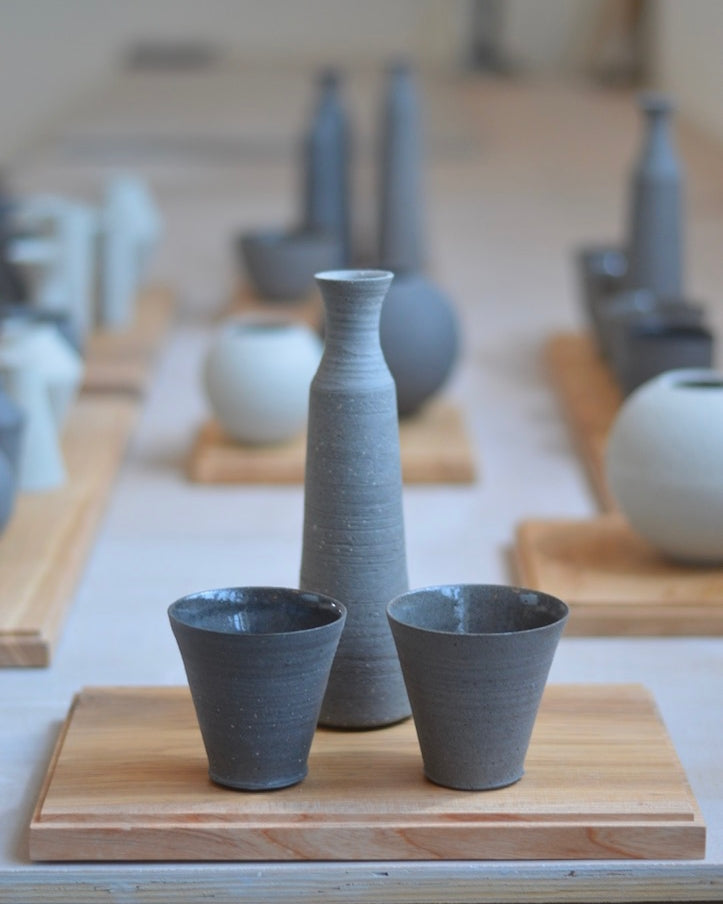

Cups are Jono's most popular pieces, and due to their size and the process of throwing them, they're one of the shapes he most enjoys making.

Can you tell us about your design studio space?
We work in two studios on the top floor of a converted Victorian school in East Glasgow. To the north we can see the mountains that begin around Loch Lomond. The school was where the children of the factory workers would have attended up until the 1970s. We sometimes have delivery drivers who went to the school and tell us tales of the place. The tenements thats used to surround the school are no longer here. We work in a slighty isolated, quiet part of Glasgow and it really helps us to focus.
When will your next website shop opening be and how can we stay up to date with it? What have you been working on ahead of this opening and what can we expect to see?
Our next shop update will be in the summer. For the first time there will be lidded vessels, teapots and coffee sets. We’ll have some new sculptural work and possibly some wood turned objects. The best way to see the work is through our Instagram account and our newsletter.
We would like to thank Jono for taking the time to talk to Warehouse Home. For more information on Jono Smart, visit his website.

